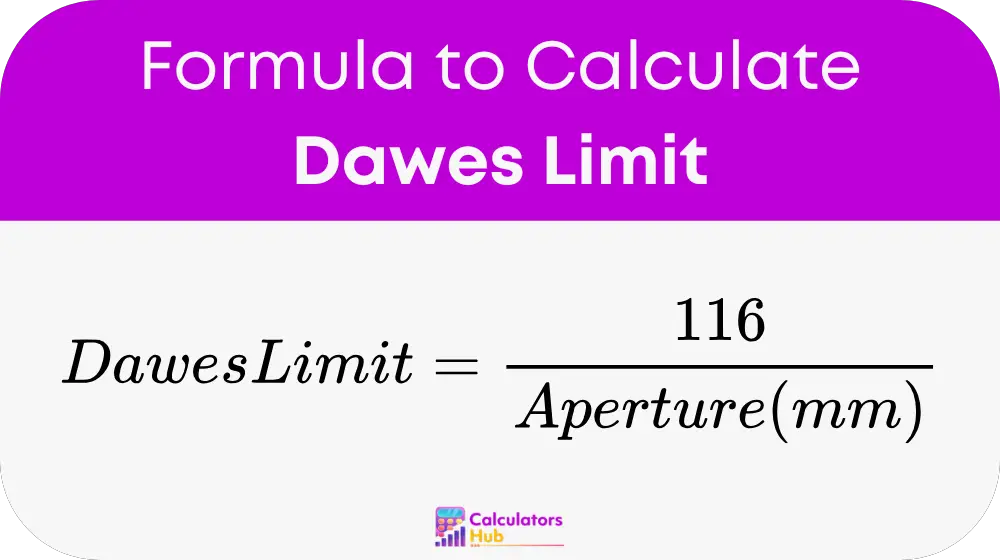この ドーズ限界計算機 helps astronomers determine the theoretical resolving 電力 of a telescope. The ドーズリミット 最小です 角度分離 between two objects that a telescope can resolve, measured in arcseconds.
This calculator is essential for astronomy enthusiasts, astrophotographers, and professional astronomers who want to understand the 分解能 of their telescope. It provides insight into how well a telescope can distinguish closely spaced celestial objects such as binary stars.
Formula for Dawes Limit Calculator
The Dawes Limit is calculated using the following empirical formula:

どこ:
- 116 = Empirical constant derived by astronomer William R. Dawes.
- 絞り(mm) = The diameter of the telescope’s objective lens or mirror.
This formula applies to optical telescopes and assumes perfect atmospheric conditions and high-quality optics.
Dawes Limit Reference Table
Below is a reference table that provides the 解像力 of telescopes with different apertures.
| Telescope Aperture (mm) | Dawes Limit (arcseconds) |
|---|---|
| 50 mm | 2.32 " |
| 80 mm | 1.45 " |
| 100 mm | 1.16 " |
| 150 mm | 0.77 " |
| 200 mm | 0.58 " |
| 250 mm | 0.46 " |
| 300 mm | 0.39 " |
This table helps astronomers quickly estimate the resolving capability of various telescope sizes. A smaller Dawes Limit means better resolution、ユーザーができるようにする distinguish finer details in celestial objects.
Example of Dawes Limit Calculator
Scenario: Calculating the Dawes Limit for a 150 mm Telescope
An astronomer wants to determine the resolving power of a 150 mm telescope.
式の使用:
- ドーズリミット = 116 / 150
- ドーズリミット = 0.77秒角
This means the telescope can resolve two stars separated by at least 0.77 arcseconds under ideal viewing conditions.
最も一般的な FAQ
The Dawes Limit helps determine a telescope’s ability to distinguish close celestial objects。 役に立つ observing binary stars, lunar craters, and planetary details。 しかし、 現実世界の要因 such as atmospheric turbulence and optical quality can affect actual resolution.
はい、 lower Dawes Limit (smaller arcseconds) 手段 より高い解像度. This allows the telescope to distinguish finer details and separate close objects more effectively.
はい、 turbulence in Earth’s atmosphere (seeing conditions), optical imperfections, and observer experience can limit actual telescope resolution. Even with a low Dawes Limit, poor atmospheric conditions may prevent an observer from achieving maximum resolution.